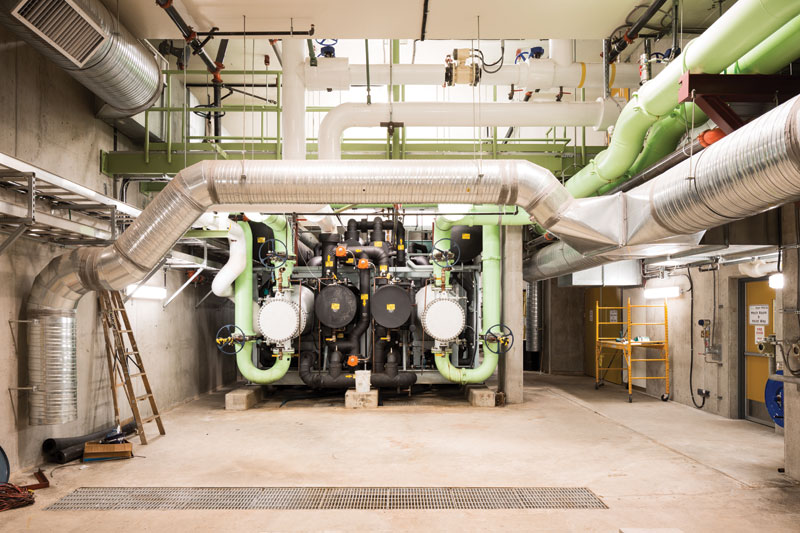District-energy proponents often promise socio-economic benefits in addition to conventional financial return. However, a lack of data from reputable sources often becomes a proposal’s Achilles heel—and a council’s support for the project almost requires a political leap of faith.
Economic versus financial
Economic analysis is often confused with financial analysis. Financial analysis is clearly defined: an assessment of a project’s viability from the perspective of the money invested. An economic analysis differs, however, by addressing the best use of resources and the impact of the project on the surrounding environment.
The key component here is “value” rather than “viability.” To municipal leaders, viability ensures no money wasted, but value means a competitive community that creates employment through economic development. To senior government, this value means an enhanced manufacturing sector or activities supporting programs and policies.
A full economic analysis evaluates:
- Direct benefits—those associated with the construction and operation of the plant;
- Indirect benefits—those associated with the production of the equipment purchased; and
- Induced benefits—those associated with the workforce spending their wages within the community.
While economists have developed a variety of complex modelling tools to simulate national energy requirements, no tools to date have been developed to estimate the economic impact at a local or regional level. In an attempt to get a better insight into this issue, Natural Resources Canada created the District Energy Economic Model (DEEM). This model uses detailed cost estimates and statistical economic multipliers to estimate the socio-economic impact of district-energy systems within Canada.
DEEM
The model operates by aligning a project’s through-life investment with the economic behaviour of its originating industrial sectors: the investment is converted to direct and indirect benefits. Induced benefits are not included in DEEM because of the lack of comprehensive statistical data within the multipliers. The benefits that the resulting information brings to the discussion answers those concerns most often raised by city hall when they assess their investment options: how many jobs will be produced, what local revenue will be generated, and what is the value of this cleaner, greener product?
Periodically, Statistics Canada develops a series of input-output economic multipliers for each province that present the performance of more than 200 industry sectors in Canada. For a unitary input of investment, these multipliers describe the level of employment, taxes, and gross domestic product (GDP) generated for each sector. The quality of the multipliers varies by province due to the size of the industry and the industrial makeup of the province, and this variation means that the viability of district energy varies. The potential for district energy depends upon its proposed location and technology. If district energy is to be encouraged, then an understanding of these relationships—those between location, technology, and economy—is essential.
Analysis
To illustrate some of these provincial variations, Natural Resources Canada used DEEM to determine the socio-economic implications of district-energy systems in three provinces: Ontario (Toronto), Alberta (Calgary), and British Columbia (Vancouver). In each province, three hot-water district-energy projects were proposed: a gas-fired boiler, gas-fired combined heat and power (CHP), and a biomass boiler. Identical building clusters (120,000 square metres) were assumed for each system, and required heating loads were determined according to the appropriate regional climate zone.
A three-year build-out period was assumed for each system with an estimated 25-year lifetime, and as a consistent base case, a “business as usual” (BAU) scenario was created assuming natural-gas space heating and grid electricity. The estimated component costs were divided according to their assumed origin of supply—whether locally within the city, elsewhere in the province, or outside the province. The sectors define the economic multipliers used in the DEEM calculations, and the cost distribution indicates to whom any benefits would accrue. The development of the economic multipliers assumes a mature industrial sector within each province where the benefits are spread evenly across the province. This may limit the use of DEEM and a more focused indicator set is required for the development of regional policy or municipal energy-related decisions.

Results
The analysis provided valuable insight into the value of district energy to Canadian cities and provinces in terms of their socio-economic benefits and the impact on local environment relative to the BAU scenario. The sometimes-conflicting research results prevent the creation of generalities and re-enforces the need for careful priority setting. A key question for the reader is, therefore, “What is the goal: climate change reduction, wealth generation, or job creation?” The answer will significantly impact the solution, especially when a monetized environmental impact is included.
Capital and operating costs
Table 1 illustrates the capital and operating costs of three options normalized to their BAU cases. As noted, the cost of district-energy infrastructure is at a premium compared to stand-alone building-based heating. The increase in wages and salaries associated with these options also vary, but become the basis for increased indirect and induced benefits.
 Technologies
Technologies
The heating technology used within each option impacts the level of socio-economic improvement. For CHP, its benefits are very much site-specific. In Calgary, for example, the social benefits from environmental improvements suggest distributed CHP could provide a significant cost saving to the province as the existing carbon emissions and airborne pollutants (CACs) are displaced. Moving that CHP system to Toronto or Vancouver, however, increases the social costs of operation as the natural gas emissions effectively “dirties” the electricity grid (Table 2).
Fuels
The source of the fuel is also a critical component. Biomass fuel was assumed to originate outside of urban centres with the benefits stimulating the forestry sector and provincial job creation. Gas-fired CHP in urban locations is the reverse, increasing GDP and tax revenue in the urban centre at the expense of province-wide employment (Table 3). This GDP increase reflects the sale of locally produced electricity. A point to note is that in single industry dominated areas such as gas distribution in Alberta the employment impact can be magnified since the installation of the more efficient gas-fired district energy can effectively reduce regional employment.
 Conclusions
Conclusions
Economic assessments look at the impact of technologies across Canada and highlight the many social and economic inter-relationships. For district energy, the DEEM analysis assumed a system of relatively small capacity, but illustrated the variations that exist when a more holistic and integrated energy system approach is considered. While all three district-energy systems were more costly to install than a traditional business-as-usual scenario, the redistribution of wealth (employment and revenues) would likely compensate.
Ken Church is team leader for the communities team at Natural Resources Canada, specializing in community energy systems.
















